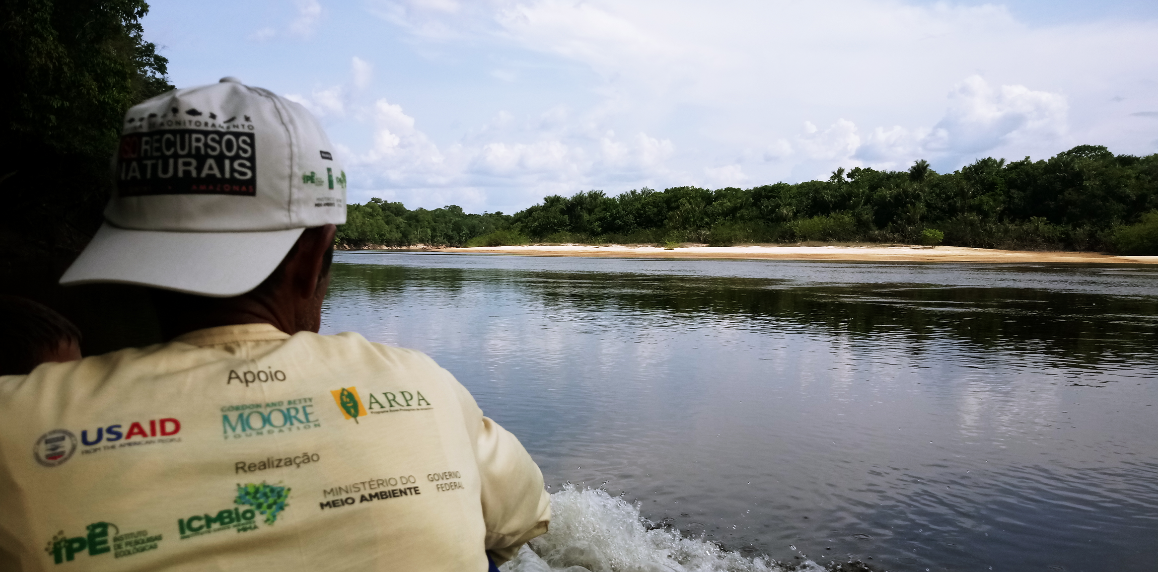::cck::868::/cck::
::introtext::
About 120 communities who live in Protected Areas in Amazon received capacitation and training to watch irapuca’s (Podocnemis erythrocephala), tracajá’s (Podocnemis unifilis) and amazon turtles’ (Podocnemis expansa) species protected nests, since the spawning until the eggs hatch. The action happened in early July until the beginning of August and aims to help the hatchlings survive. The period of time chosen for this capacitation is the dryer one, for it’s when the turtle’s spawn occurs.
Virgínia Bernardes, scientific coordinator in Biodiversity Participative Monitoring – Monitoramento Participativo de Biodiversidade (MPB/IPÊ) -, joined the team of analysts, brigade and Núcleo de Gestão Integrada (NGI) Novo Airão volunteers, and for 18 days, crossed every community in Jaú and Unini rivers which are inserted in Jaú’s National Park (Parque Nacional (Parna) do Jaú), Extractive Reserve Rio Unini (Reserva Extrativista (Resex) Rio Unini) and Amanã Sustainable Development Reserve (Reserva de Desenvolvimento Sustentável (RDS) Amanã).
“The capacitations are extremely important for the permanence of the success in data collection and monitor engagement. Moreover, the meetings between the researchers, focal point and monitors are the ones that enable the dialogue for a better alignment and understanding of possible updates about protocols (methodology), forms, data collection’s evaluation moment, knowledge sharing, experiences and agreement redefinitions and appointments”, Virgínia says.
Fire prevention was also among the topics at the meeting. The team carried out an expedition with the fire brigade from NGI Novo Airão. “As an effect of the climate changes in the last few years, the Amazon has presented a greater susceptibility to fire for the rain decreasing during this dry time, especially in lowland forests, riplet forests and igapós”, Virgínia explains. During the activity, an instruction focusing on building firebreaks around the plantation swiddens, at the moment of the fire cleaning, was made, remembering the agreed rules on the handling plans of the Resex Rio Unini and Jaú’s National Park’s terms of commitment.
About MPB
The activity is part of the partnership between IPÊ and ICMBio – Instituto Chico Mendes de Conservação da Biodiversidade, through the National Program of Biodiversity Monitoring (MONITORA – Programa Nacional de Monitoramento da Biodiversidade) and the National Center of Research and Conservation of the Amazonian Biodiversity (CEPAM – Centro Nacional de Pesquisa e Conservação da Biodiversidade Amazônica).
The initiative is an activity from the project MPB – Monitoramento Participativo da Biodiversidade em Unidades de Conservação na Amazônia, as in Biodiversity Participative Program in Conservation Unities in Amazon, developed by IPÊ in partnership with ICMBio, and support from Gordon and Betty Moore Foundation, USAID and ARPA.
::/introtext::
::fulltext::::/fulltext::
::cck::868::/cck::


